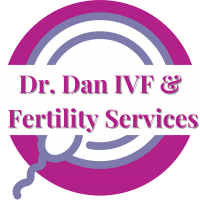Certain medical conditions may require surgical procedures as part of your infertility treatment. We offer a range of surgical fertility treatments with a focus on minimally invasive techniques performed at the Surgical Arts Surgery Center. In your consultation with Dr. Dan, he will discuss a comprehensive treatment plan specific to your situation and fertility needs, including any surgical options necessary.
Some of the most common female conditions requiring surgical intervention are endometriosis, polyps, and fibroids. These treatments involve laparoscopic or hysteroscopic surgery, which use small, “keyhole” incisions and small cameras to clearly visualize the affected areas. These minimally invasive techniques are much quicker, less painful, and have a quicker recovery time than traditional abdominal surgery.
LAPARASCOPIC PROCEDURES
Laparoscopy means “observation of the side.” This kind of surgery allows the doctor to clearly visualize the pelvic or abdominal cavity with minimal disturbance to the body. A narrow tube with a very small camera is inserted through a small incision into the abdomen. If needed, additional tools are also inserted to repair or remove affected tissue. Using laparoscopic procedures, Dr. Dan can simultaneously diagnose and treat conditions like endometriosis and fibroids, all using minimally invasive techniques that reduce discomfort and speed recovery time for the client.
HYSTEROSCOPIC PROCEDURES
Hysteroscopy means “observation of the uterus.” This kind of surgery also uses a tube and small camera to simultaneously examine and operate on affected areas. Unlike laparoscopy, hysteroscopy does not require any incisions. Instead, the cervix is dilated so an instrument with a camera can be gently inserted through the vagina into the uterus. Where a laparoscope is used to see the outside of the uterus, a hysteroscope visualizes the inside of the uterine cavity, and can be used to treat conditions on the uterine lining such as an endometrial septum or polyp.
ENDOMETRIOSIS
Endometriosis is a condition where cells normally found in the uterine lining grow in other places in the pelvis, such as the ovaries and fallopian tubes, and, occasionally, the rest of the body. During a menstrual cycle, these cells will grow and shed, which leads to painful scarring that can negatively impact the ability to conceive. Laparoscopy is the best way to accurately diagnose endometriosis, allowing us to see exactly where the lesions are located and how many there are. During the procedure, the doctor can also use a special laser to remove the lesions.
POLYPS & FIBROIDS
Endometrial polyps and uterine fibroids are two different conditions that both involve non-cancerous growths of tissue in the uterine wall. The exact causes of both conditions are unknown, although unusual hormone levels may be involved. Both conditions are associated with infertility; in fact, endometrial polyps are often diagnosed for the first time during initial infertility testing. Both polyps and fibroids can be diagnosed and potentially removed through minimally-invasive procedures.
TUBAL REVERSAL SURGERY
In certain cases, laparoscopic surgery can be used to reverse tubal ligation (“tying one’s tubes”). While the procedure is, like all laparoscopy, minimally invasive, it can be complicated. If you have had a tubal ligation, talk to Dr. Dan about your history to see if tubal reversal surgery is a viable option for you.
Surgery is just one of the many fertility options available to you. Our team is committed to creating the best fertility treatment plan for your specific needs, providing the highest-quality, compassionate care along the way.
